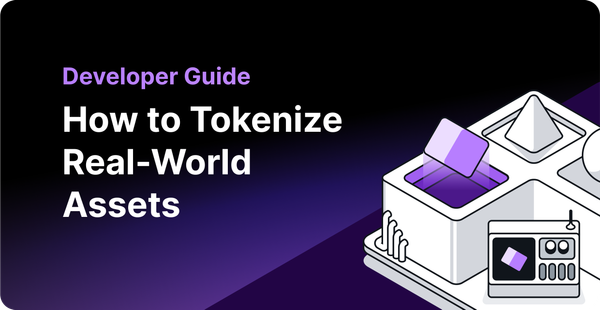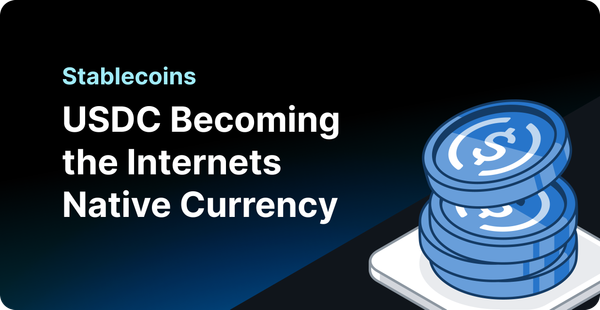XRP Ledger & QuickNode: Building on a Proven Blockchain in Seconds
QuickNode now supports XRP Ledger, a Layer 1 open-source, energy-efficient, and decentralized blockchain powered by a global developer community.

XRP Ledger is now live on the QuickNode platform!
We’re thrilled to announce the addition of the XRP Ledger (XRPL) as QuickNode’s 23rd-supported blockchain protocol. By adding the XRPL to our ecosystem, QuickNode will help developers on the XRPL build their business and move web3 closer toward mass adoption with reliable blockchain solutions.
The XRPL is especially beneficial for developers who want to build businesses. With protocol capabilities honed over the last decade to enable scalable blockchain development, developers can build innovative projects and applications across use cases including payments, tokenization, DeFi, and more.
QuickNode’s XRPL infrastructure is now available to everyone on our platform. Get started on the XRP Ledger instantly!
The Main Benefits of XRPL Are:
- Proven Reliability: Supports large scale use cases and long term projects with 2.6B+ successful transactions without failure or security breach since 2012.
- Ready To Go: Access complete blockchain functionality, from tokenizing assets to advanced payments, without needing to learn, build, and maintain complex smart contracts.
- Fast, Cheap, Green: Carbon neutral blockchain settling transactions every 3-5 seconds at fractions of a cent per transaction for mass market adoption.
- Mass Adoption: 4.5M+ XRP wallet holders around the world and XRP market capitalization of ~$25B - making XRP one of the largest and most adopted cryptocurrencies.
Use Cases for XRPL
The XRP Ledger provides developers with powerful utility and flexibility, where they can code in Python, Java, and JavaScript languages. The XRPL is suitable for any independent developer or enterprise that wants to build for a variety of use cases.
Payments
Using the XRP Ledger, assets can be moved across the world, enabling instant money transfers for remittances, treasury payments, payrolls, and other cross-border payments. For instance, RippleNet powers cross-border payments through a decentralized network of banks and payment providers that uses the XRP Ledger. Users can also set up an XRP wallet like Xumm to transact XRP, a neutral bridge asset optimized for global payments with low fees.
Tokenization
Any kind of asset can be tokenized on the XRP Ledger, including real world assets, stablecoins, NFTs, and Central Bank Digital Currencies (CBDCs).
DeFi
Financial products and services can be accessed via the XRPL’s decentralized exchange (DEX). The protocol native DEX is a key feature that powers trading and settlement of tokenized assets without intermediaries. Because liquidity is consolidated in a single DEX, this leads to the best prices, deeper liquidity, and ease of use for developers.
An amendment to add a protocol native automated market maker (AMM) is anticipated to be proposed to the XRPL. If implemented, the AMM will bring additional swapping, trading, and liquidity provision features to the XRPL, and it will integrate with the order book DEX. It is designed to reduce impermanent loss for liquidity providers by introducing a novel auction mechanism that incentivizes arbitrageurs to bid for price discrepancies.
CBDCs
The XRP Ledger supports the tokenization of CBDCs. With this feature, central banks can sustainably and securely interoperate with other payment systems.
Stablecoins
Financial institutions can issue stablecoins on the XRP Ledger.
How the XRP Ledger Works
The XRPL uses a Proof-of-Association (PoA) consensus algorithm in which designated servers called validators come to an agreement on the order and outcome of XRP transactions every 3-5 seconds.
All servers in the network process each transaction according to the same rules, and any transaction that follows the protocol is confirmed right away. All transactions are public, with strong cryptography to guarantee the integrity of the system.
Anyone can operate a validator; currently, over 100 validators are active on the ledger, operated by universities, exchanges, businesses, and individuals. Additionally, the consensus protocol ensures the blockchain becomes more decentralized over time as the validator pool grows.
The cryptocurrency native to the XRP Ledger is XRP, a neutral bridge asset that is optimized for transactions. XRP functions as a medium of exchange to facilitate transactions quickly, cheaply, and sustainably. It can also be used to transact on XRP Ledger’s decentralized exchange (DEX) or engage with tokenized assets.
Why QuickNode?
QuickNode makes blockchain infrastructure easy, freeing developers to focus on the dApps (decentralized applications) they’re building instead of everything that goes into running blockchain infrastructure, such as DevOps/NodeOps, uptime, scaling, security, tooling, etc...
By eliminating the headache of node maintenance & synchronization, and providing a comprehensive, end-to-end platform, we save developers valuable time getting a high-quality dApp to-market faster, and help businesses scale and execute their Web3 strategies.
QuickNode is an indispensable tool in a Web3 developers’ arsenal that was created by developers for developers, battle-tested by industry-leading projects.
Today, the QuickNode network processes over 200 Billion requests per month across 14+ regions worldwide.
Visit QuickNode.com or check our guides section for more information.
To learn more about the XRP Ledger and its capabilities, visit the following resources:

About QuickNode
QuickNode is building infrastructure to support the future of Web3. Since 2017, we've worked with hundreds of developers and companies, helping scale dApps and providing high-performance access to 23+ blockchains. Subscribe to our newsletter for more content like this, and stay in the loop with what's happening in Web3!





